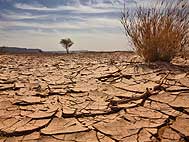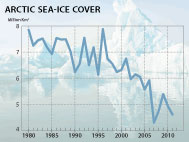| SEARCH |
-

Nov 17, 2015
Reflections on a three-decade legacy
The International Geosphere-Biosphere Programme (IGBP) will come to a close at t...
-
Nov 17, 2015
Use of and access to content on this website
Text and images produced by IGBP in house are free to use with appropriate credi...
-
Nov 12, 2015
Bella Gaia performance and panel discussion to mark IGBP's closure
A musical performance by Bella Gaia will celebrate the achievements and legacy o...
-

Towards Future Earth:
evolution or revolution?
During its three decades of existence, the International Geosphere-Biosphere Pro...
-
A personal note on IGBP and the social sciences
Humans are an integral component of the Earth system as conceptualised by IGBP. João Morais recalls key milestones in IGBP’s engagement with the social sciences and offers some words of advice for Future Earth.
-
IGBP and Earth observation:
a co-evolution
The iconic images of Earth beamed back by the earliest spacecraft helped to galvanise interest in our planet’s environment. The subsequent evolution and development of satellites for Earth observation has been intricately linked with that of IGBP and other global-change research programmes, write Jack Kaye and Cat Downy .
-
Deltas at risk
Around 500 million people worldwide live on deltas, but many of the world's deltas are sinking due ...
-
Climate change: the state of the science
A new data visualization released on the first day of the plenary negotiations at the UNFCCC’s clima...
-
Climate Change:
the State of the Science
Videos now online from the Stockholm public forum to mark the launch of the IPCC's climate report, 2...
Multiphase halogen chemistry in the tropical Atlantic Ocean
Environmental Science & Technology (2012)
Sommariva R and von Glasow, R
DOI: 10.1021/es300209f
Vol 46, Issue 19, pp 10429-10437

Abstract
We used a one-dimensional model to simulate the chemical evolution of air masses in the tropical Atlantic Ocean, with a focus on halogen chemistry. The model results were compared to the observations of inorganic halogen species made in this region. The model could largely reproduce the measurements of most chlorine species, especially under unpolluted conditions, but overestimated sea salt chloride, BrCl, and bromine species. Agreement with the measurements could be improved by taking into account the reactivity with aldehydes and the effects of dimethyl sulfide (DMS) and Saharan dust on aerosol pH; a hypothetical HOX → X– aqueous-phase reaction could also improve the agreement with measured Cl2 and HOCl, especially under semipolluted conditions. The results also showed that halogens speciation and concentrations are very sensitive to cloud processing. The model was used to calculate the impact of the observed levels of halogens: Cl atoms accounted for 5.4–11.6% of total methane sinks and halogens (mostly bromine and iodine) accounted for 35–40% of total ozone destruction.
IGBP closed at the end of 2015. This website is no longer updated.
-

Global Change Magazine No. 84
This final issue of the magazine takes stock of IGBP’s scientific and institutional accomplishments as well as its contributions to policy and capacity building. It features interviews of several past...
-

Global Change Magazine No. 83
This issue features a special section on carbon. You can read about peak greenhouse-gas emissions in China, the mitigation of black carbon emissions and the effect of the 2010-2011 La Niña event on gl...
-
INTERGOVERNMENTAL PANEL ON CLIMATE CHANGE:
How green is my future?
UN panel foresees big growth in renewable energy, but policies will dictate just how big.
-
UK:
'The Anthropocene: a new epoch of geological time?'
Royal Society, Philosphical Transactions A




















